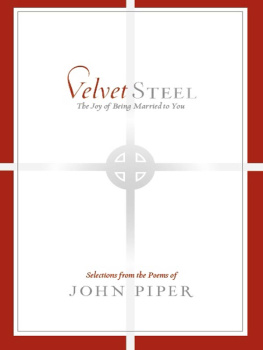JOHN DEERE'S STEEL PLOW
John Deere in 1837 invented a plow that could be used successfully in the sticky, root-filled soil of the prairie. It was called a steel plow. Actually, it appears that only the cutting edge, the share, on the first Deere plows was steel. The moldboard was smoothly ground wrought iron.
Deere's invention succeeded because, as the durable steel share of the plow cut through the heavy earth, the sticky soil could find no place to cling on its polished surfaces.
Americans moving westward in the beginning of the 19th century soon encountered the prairie lands of what we now call the Middle West. The dark fertile soils promised great rewards to the farmers settling in these regions, but also posed certain problems. First was the breaking of the tough prairie sod. The naturalist John Muir describes the conditions facing prairie farmers when he was a boy in the early 1850's as he tells of the use of the big prairie-breaking plows in the following words:
They were used only for the first ploughing, in breaking up the wild sod woven into a tough mass, chiefly by the cord-like roots of perennial grasses, reinforced by the tap roots of oak and hickory bushes, called "grubs," some of which were more than a century old and four or five inches in diameter.... If in good trim, the plough cut through and turned over these grubs as if the century-old wood were soft like the flesh of carrots and turnips; but if not in good trim the grubs promptly tossed the plough out of the ground.
The second and greater problem was that the richer lands of the prairie bottoms, after a few years of continuous cultivation, became so sticky that they clogged the moldboards of the plows. Clogging was such a factor in prairie plowing that farmers in these regions carried a wooden paddle solely for cleaning off the moldboard, a task which had to be repeated so frequently that it seriously interfered with plowing efficiency. It seems probable that by the 1830's blacksmiths in the prairie country were beginning to solve the problem of continuous cultivation of sticky prairie soil by nailing strips of saw steel to the face of wooden moldboard of the traditional plows. Figure Steel presented a smoother surface which shed the sticky loam better than the conventional wooden moldboards covered with wrought iron, or the cast iron moldboards of the newer factory-made plows then coming into use.
It is generally accepted as historical fact that John Deere made his first steel plow in 1837 at Grand Detour, Illinois. The details of the construction of this plow have been variously given by different writers. Ardrey describe Deere's original plow as having a wooden moldboard covered with strips of steel cut from a saw, in the manner of the John Lane plow.
The Author :
Edward C. Kendall is curator of agriculture, Museum of History and Technology, in the Smithsonian Institution's United States National Museum.
In recent years the 1837 Deere plow has been pictured quite differently. This has apparently come about as the result of the discovery of an old plow identified as one made by John Deere at Grand Detour in 1838 and sold to Joseph Brierton from whose farm it was obtained in 1901 by the maker's son, Charles H. Deere. He brought it to the office of Deere & Company at Moline, Illinois, for preservation and display. This plow is shown in figures ) suggests that the Museum's plow is the earliest of the three, since there is particularly evident an evolution of the shape of the moldboard from a simple, almost crude form to a more sophisticated shape.
Figure 1.
Figure 1. New England Strong Plow, Mid-18th Century . Colter locked into heavy, broad share; wooden moldboard covered with iron strips. (Cat. no. F1091; Smithsonian photo 13214.)
DEERE AND ANDRUS
Writers of the 20th century describing the making of the first John Deere steel plow have in mind the 1838 plow. One claims that Leonard Andrus, the founder and leading figure of Grand Detour and part owner of the sawmill, conceived the design of the plow and employed Deere, the blacksmith newly arrived from Vermont, to build it. This idea may have originated with and was certainly promoted by the late Fred A. Wirt, as advertising manager of the J. I. Case Company. It is difficult, at this distance, to determine the parts played at the beginning by Deere and Andrus.
Figure 2.
Figure 2. Large Prairie-Breaking Plow, Mid-19th Century . Wheels underneath the beam regulate the depth of plowing; large wheel runs in the furrow, small wheel on the land. The colter is braced at the bottom as well as at the top. The share cuts a broad, shallow strip of sod which the long, gently curving moldboard turns over unbroken.
The earliest existing partnership agreement involving Andrus and Deere is dated March 20, 1843. The existing copy is unsigned, but its conditions are the same as those in the agreements executed during the next few years. It began by stating that Deere and Andrus had agreed "to become copartners together in the art and trade of Blacksmithing, ploughmaking and all things thereto belonging at the said Grand Detour, and all other business that the said parties may hereafter deem necessary for their mutual interest and benefit ..." One of the terms was that the copartnership should continue from the date of the agreement "under the name and firm of Leonard Andrus."
A second agreement dated October 26, 1844, This carried an addendum dated June 22, 1847, in which Andrus and Deere bought out Lathrop's interest in the business and agreed to continue under the name of Andrus and Deere. This is the only mention of the firm of Andrus and Deere. It could only have lasted a few months because it was in 1847 that Deere moved to Moline and established his plow factory there.
Figure 3.
Figure 3. Reconstructions of John Deere's 1837 Plow . For a discussion of the position and attachment of the handles see p.. (Deere & Company photo.)
These agreements suggest that Leonard Andrus was the capitalist of the young community of Grand Detour, as well as its founder. The dominance of the name Andrus tends to back up the opinion which holds that Andrus was the leading figure in the development of the successful prairie plow. On the other hand, the general tone of the agreements suggests that two or more people were participating in an enterprise in which each contributed to the business and shared in the results. Deere contributed his plow and his blacksmith shop, tools, and outbuildings; Andrus contributed money and business experience. There is no indication that they were formally associated prior to the agreement of March 20, 1843. An advertisement (it is quoted later) dated February 3, 1843, and appearing in the March 10, 1843, issue of the Rock River Register, carries an announcement by John Deere that he is ready to fill orders for plows, which he then describes. There is no mention of Andrus or of an Andrus and Deere firm. I am inclined by the evidence to the view that Deere worked out his plow by himself, began to manufacture it in small numbers, needed money to enlarge and expand his operations, and went to the logical source of capital in the community, Leonard Andrus.
In support of this view I quote a statement by Mr. Burton F. Peek who has spent most of his life in Deere & Company and who may now be the only person living who knew John Deere:














